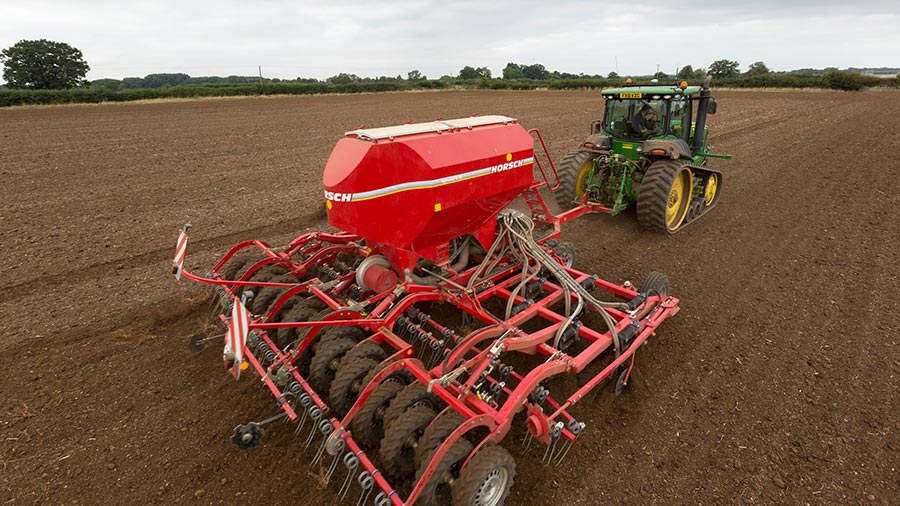Top tips for late-drilling wheat growers
 © Tim Scrivener
© Tim Scrivener Late-drilling winter wheat growers on heavy soils need to focus on crop nutrition as rapidly cooling soils give slow availability of nutrients, and so feeding crops is key to preventing stress and disease getting a hold.
Drilling in the second half of October onwards can help in the fight against blackgrass, septoria disease and lodging, but these crops take longer to emerge and are at greater risk from soil pests and adverse soil conditions.
Ben Haste, Suffolk grower and agronomist for advisory group Farmacy, says there is less biological cycling in the soil in the late autumn and hence less nutrients, and late-drilled crops often have to cope with the nutrient drain from incorporated straw.
See also: Why wheat drill dates should be delayed this autumn
“Feeding crops is vital to keep late-drilled wheat going through the winter months.
It is important that nitrogen, phosphorus and potassium are all applied correctly, efficiently and sustainably and, most importantly, at the right balance that your soils require,” he says.
Phosphate for rooting
If phosphate has not gone on with the wheat seed, it needs to be applied early to encourage rooting, Ben says.
Its availability is reduced in cold, wet soils, so growers should consider using a liquid phosphate fertiliser which is more readily taken up in these conditions.
Also, just like a second wheat, a good early dose of nitrogen will be important to maximise tiller retention in the early spring.
He suggests 60-80kg/ha in mid-February, ideally accompanied by fresh phosphate, some potash to support shoot development and sulphur to balance the nitrogen.
“Then you should come back with the nitrogen regularly to keep the crops going, so you don’t leave a ‘hungry gap’,” he adds.
Tiller retention
Once the crop is growing away, he suggests an early, low temperature-active plant growth regulator to help with tiller retention, promote rooting and counteract the tendency for thick crops with thinner shoots to be more prone to lodging.
Ben also recommends a good dose of a seaweed biostimulant at this stage, which will help boost young plant immunity and is good for feeding the soil life, thereby keeping the biology cycling and providing a better soil environment for the release of nutrients to plants.
“It’s all a matter of recognising the challenges of later drilling and doing everything possible to counteract them so you can take full advantage of its valuable role in managing blackgrass,” he says.

